The Nantlle Ridge was the route planned for this walk. Four of us were going to ascend Y Garn in Eryri (Snowdonia) and walk the ridge to the far end, spend the night near the last peak, descend the far side in the morning and walk the valley back to the start point. A solid walk for sure of 25k in total, and a camp at summit, not too shabby.
However, “The best laid schemes ‘o mice and men gang aft agley”, but I’m getting slightly ahead of myself.
The weather forecast showed that we would have a low cloud base at 400m on Saturday (well below the peak), meaning that we would be walking in cloud on the ridge. Not too much of an issue as navigating in conditions like that is fairly straightforward if you can use a map and compass, or even a mapping app. Most of the time you can just follow the path that goes in the general direction you need go, as there’s nearly always a reasonable amount of visibility, at least enough to see the path 20m ahead.
One of us had to drop out early due to illness (completely understandable) nobody needs to be up a hill in a remote location if you’re not well enough for it, which left three us.
Excited for the trip Mark and I met up the night before the walk for a cheeky nights camp out next to the lake (llyn) at the foot of Y Garn. After a little bit of scoping the local area we found the perfect spot to pitch up and settle in for the night. Being in one of the quieter areas of the national park, after a certain hour there was literally nobody around and the only company we had was a pair of geese, three ducks, and a cuckoo that we never got to see. Apart from the above there was absolute peace and quiet, a very real palpable calm.
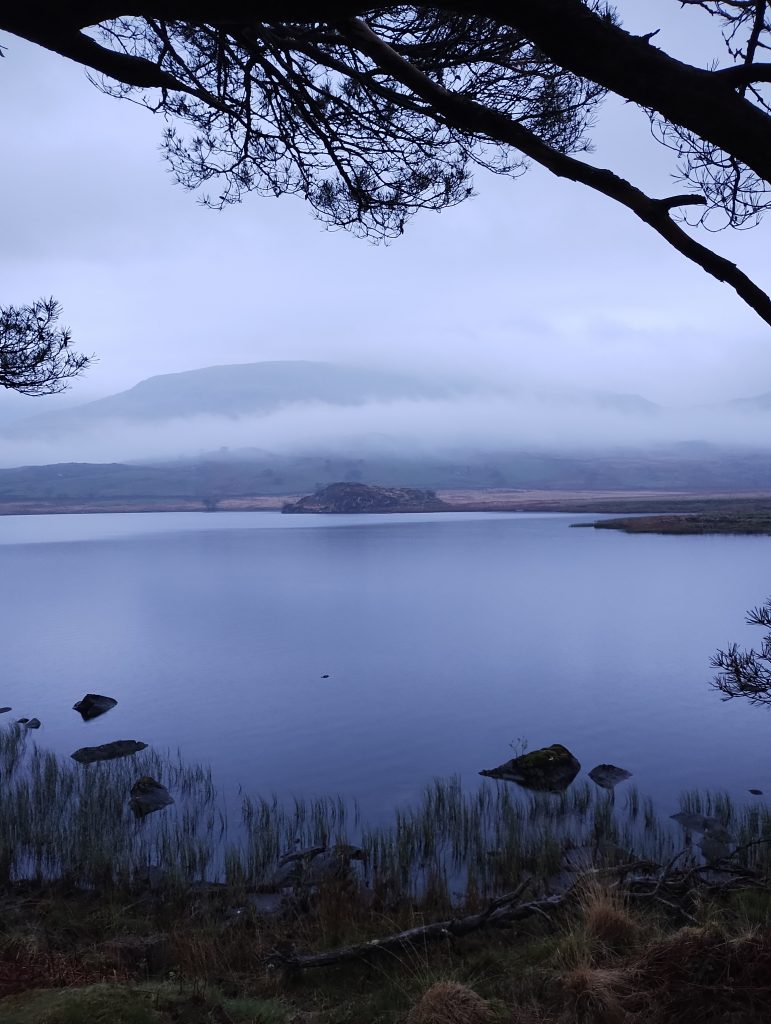
Saturday morning came with yet more of the same peace and quiet, and after the usual ablutions and breakfast we packed up and headed off to meet the third member of the walk. However, being in an area with virtually no mobile signal we had no idea that the fourth had also fallen ill and wasn’t coming. Again, it’s no good being in the hills with a case of flu, so it was the right call not to come. We did finally get the message after mooching around for a bit of signal for an hour, and the concern we had that he might just be late due to traffic or just being lost in a remote area was over, and we had confirmation all was well, if not healthy.
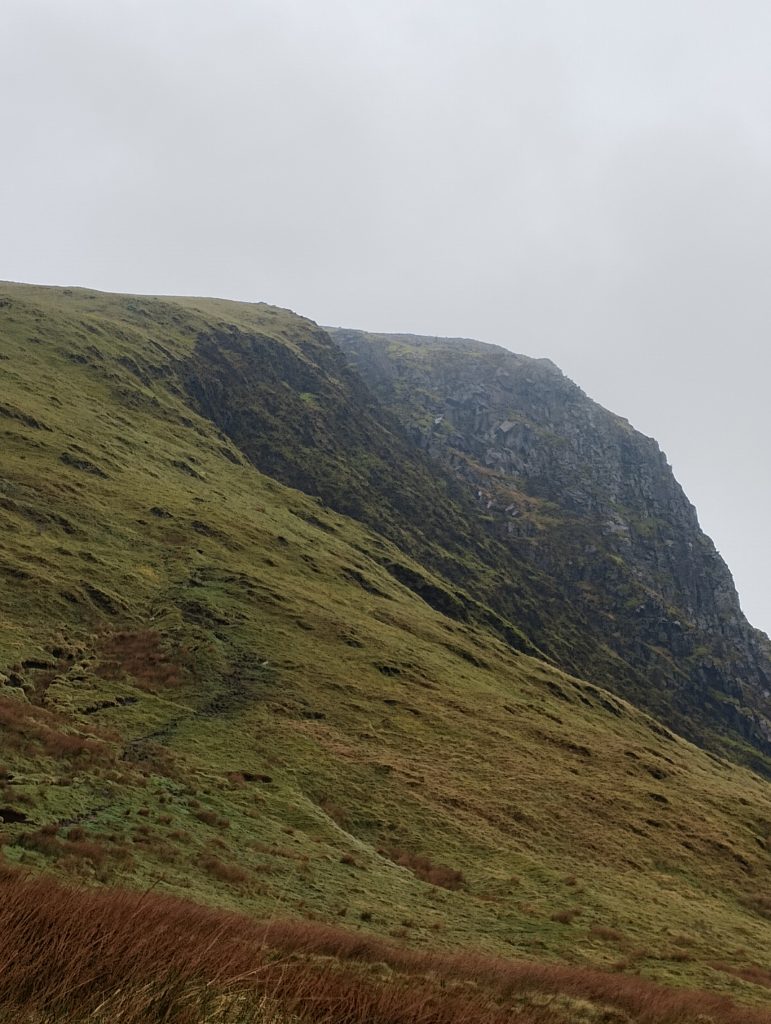
Now we knew that it was just us we headed out to pick up our gear and set off up Y Garn. It’s not a particularly high hill, but it is dramatic, and very steep. Pictures do not do it any kind of justice at all, and to say it was a hard slog to get to the top is not an exaggeration. I always knew this was the section that was going to need the most physical effort to complete, and it did not let me down. But we eventually made it, and climbing up into the cloud base and losing sight of the views below the land took on an ethereal feel, especially as towards the top the land became strewn with rock and boulders giving a very different look to what we had just walked over.
After a short stop and a refuel at the top we headed off along the ridge. And this is where it gets interesting. The next section of the walk was an arete, or col, I can never really remember the difference, and in real terms it’s only a technicality because ultimately, it’s a narrow ridge between two peaks.
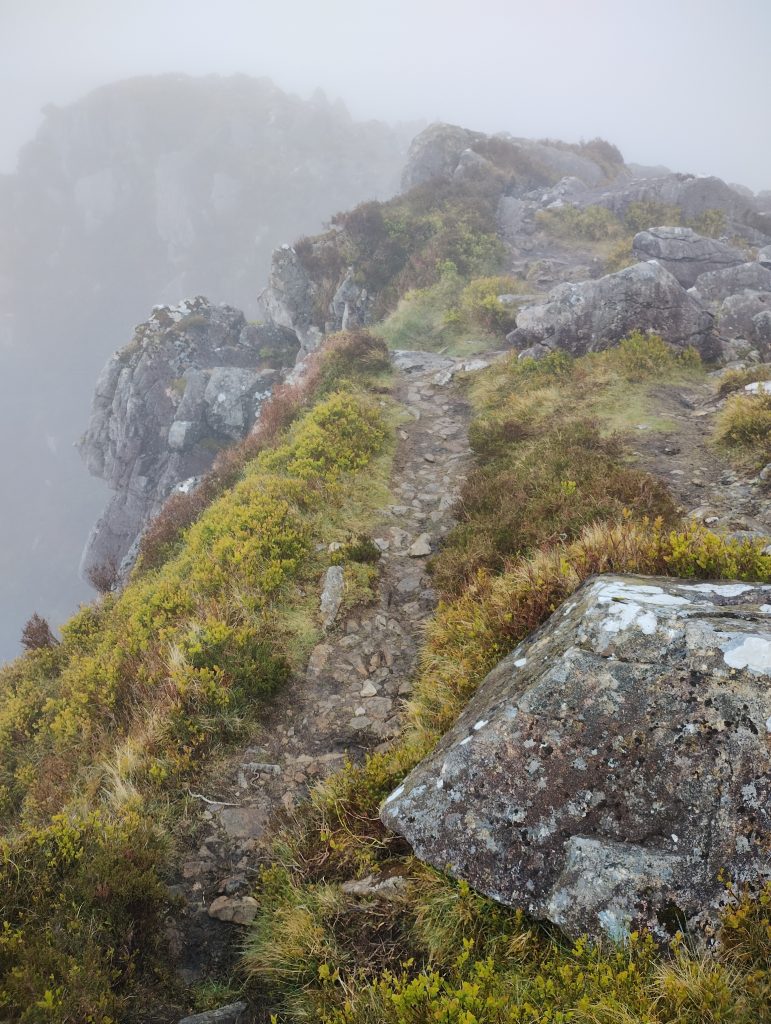
It takes a certain amount of mettle to take on any kind of arete at the best of times, usually because any path will naturally be fairly close to the edge, but in this case the edge was mostly an abyss, a steep drop into nothing, and in the cloud it becomes that much more dangerous. Despite this we made our way along the arete picking our way across the rocks and navigating a few scrambles along the narrow ridge, and we made fairly good progress considering the conditions.
However, it was at one of these scrambles that we hit a point at which we could not justifiably go any further. It was a moment of disappointment for sure, but most definitely the right decision. The scramble at this point was either over the top which meant climbing up high sections of rock face with a definite drop either side, or a very narrow ledge slightly lower down that needed you to cling tightly to the rock face. Either way was going to need a lot of effort and concentration, but in low visibility and what was becoming increasingly slippery rock surface because of the wet from the cloud, plus the heavy packs we were carrying, meant that on this occasion it was simply just too dangerous to continue any further.
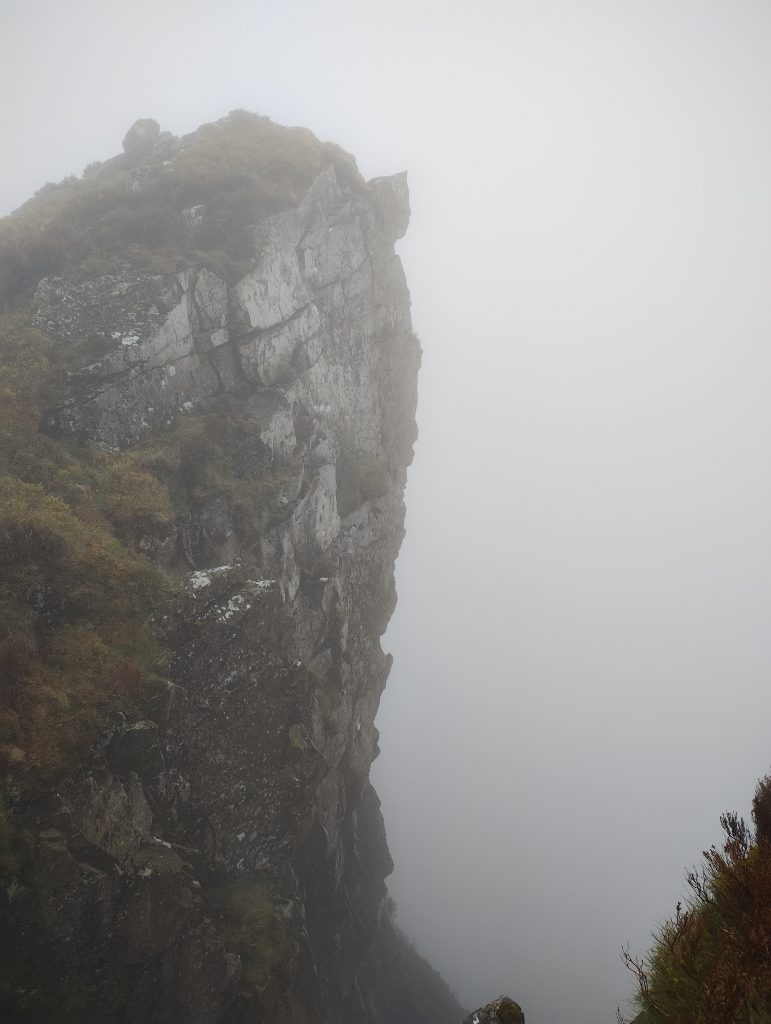
Despite the disappointment of having to turn back, as I said before, it was absolutely the right decision, and even if we had successfully continued onwards, it would have been more luck than judgement that would have kept us from potential tragedy.
So, with this in mind we literally headed back the way we came until we reached the peak of Y Garn, where we took shelter in a cairn and rested for a short time while we refueled. After a suitable period of time spent eating and chatting, we headed downhill, very much with the assistance of gravity helping to speed our descent all the way down, which meant going down was a lot quicker than going up. And if not for the hiking poles we used, I suspect it would have been even more rapid.
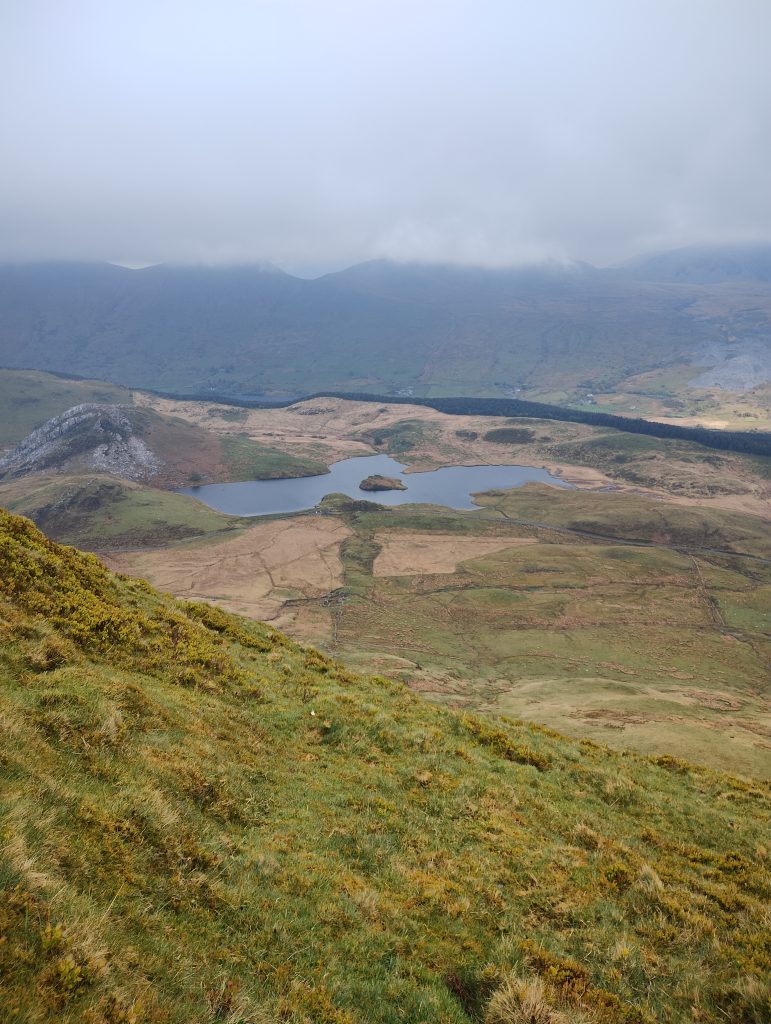
As we exited the cloud base the view opened up before our eyes revealing a clear vista across the valley and the llyn that was going to be our home again for the second night. We had made it down safely. A short walk, and about an hour later we had pitched up and got the stove on the go ready for a brew, some food, and a well deserved rest. It really was a lovely spot to pitch and simply take the time to soak it all up, and just be in the moment.
After a long day and a huge amount of effort climbing and then descending one of the steepest hills in the area it was nice to hang out at the camp, chat about anything and everything with Mark, sip away on a mug of red, and simply relax before hitting the sack for a much needed good night’s sleep.
The following morning was the usual process of ablutions, tea, breakfast, and packing up before heading off to the vehicles and the long drive home. But not before once again taking in the natural beauty of where we were and appreciating it fully for what it is.
One thing that the the Stoics encourages us to do is to practice gratitude, and this weekend made me reflect on that practice more than most. So, here’s the list of things that I’m particularly grateful for.
The many opportunities to go away camping given to me by my long suffering wife. The beauty of the places I get to see and explore. The strength to walk in these places. The opportunity to face the challenges in front of me. To rest and sleep in some truly awesome places. To share these amazing experiences in the company of a good friend, and any others that wish to experience the same. I’m grateful for the thrill I get from being ‘out there’ somewhere remote and away from the rest of the world. And I’m grateful for the wisdom to know when not to put others in a difficult or dangerous situation just to fulfil a desire to complete a planned route.
I’m also incredibly grateful for my two best friends, my trusty hiking poles, that not only help to keep me walking, but also keep my tent up.
This weekend certainly didn’t go exactly according to plan, but make no mistake, it was still a great weekend full of adventure, exercise and effort, a few challenges, great company and a lot of laughs. It was a shame that two of us failed to make it, they would have had a great time as well, but the two that remained had a good time and will return to finish the job at the earliest possible convenience.
The mountain isn’t going anywhere.
